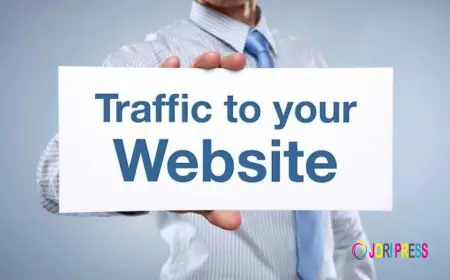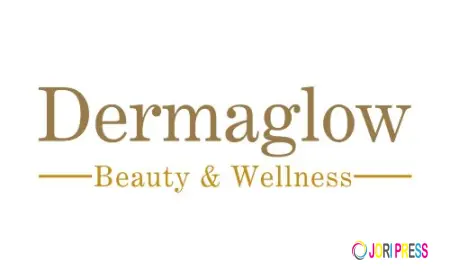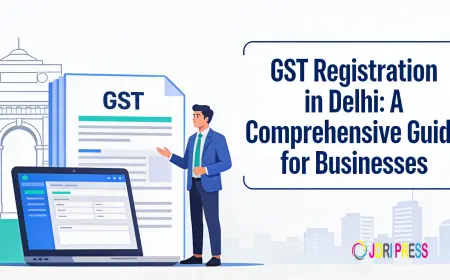What Metrics Matter Most in Local SEO Packages for 2025?
So, what metrics truly matter in today’s dynamic SEO landscape? In this post, you’ll learn which key metrics to watch, why they’re essential for growth, and how you can act on them to drive meaningful results for your local business.

If you're investing in local SEO in 2025, it's not enough to just “show up” in search results—you need to show up smartly and strategically. The success of your local SEO strategy depends on tracking the right performance indicators that reflect how well your business ranks, attracts traffic, converts leads, and earns trust in your local market.
So, what metrics truly matter in today’s dynamic SEO landscape? In this post, you’ll learn which key metrics to watch, why they’re essential for growth, and how you can act on them to drive meaningful results for your local business.
1. Google Business Profile Engagement Metrics
Your Google Business Profile (GBP) is central to local search visibility. It's the first impression many local customers get about your business—often without ever clicking through to your website.
What to Track:
- Views: How often your listing appears in search (Search and Maps).
- Clicks: Clicks to website, calls, directions.
- Messages: Number of direct messages from potential customers.
- Bookings (if enabled): Appointments or reservations made through your listing.
Why It Matters:
This data reflects your business’s visibility and interaction rate within the Google ecosystem. If you're getting views but few clicks or calls, it's time to optimize your listing images, categories, business description, and FAQs.
Actionable Tip:
Encourage reviews, respond to them promptly, and post regular updates on GBP to keep your listing active and engaging.
2. Local Pack and Organic Ranking Positions
Knowing where your business appears in local search results—and how often—is fundamental to understanding your SEO success.
What to Track:
- Local Pack Rankings: Position in the “3-pack” map results for target keywords.
- Organic Rankings: Where your website appears below the map listings.
- Ranking by Location: Position by ZIP code, neighborhood, or city sector.
Why It Matters:
Higher rankings mean more visibility, but tracking rank by geographic location gives you a clearer picture of local search dominance. Many consumers search “near me,” so localized tracking gives sharper insights than broad national data.
Actionable Tip:
Use geo-specific keyword strategies and location landing pages to rank in more than just your core city.
3. Website Click-Through Rate (CTR) from Local Search
Ranking well is one thing. Getting users to click is another.
What to Track:
- Impressions vs. Clicks in Google Search Console.
- CTR for local intent keywords (e.g., “best coffee shop in [City]”).
Why It Matters:
A low CTR may suggest your meta titles, descriptions, or GBP aren't compelling enough, even if you're ranking well.
Actionable Tip:
Write localized, benefit-driven meta descriptions with strong calls to action. Use schema markup to enhance snippets with reviews, business hours, and events.
4. NAP Consistency (Name, Address, Phone Number)
Inconsistent business information across directories confuses search engines and users alike.
What to Track:
- Accuracy across major platforms: Google, Yelp, Facebook, Bing, Apple Maps, and industry-specific sites.
- Number of consistent citations.
- Duplicate or outdated listings.
Why It Matters:
Consistency builds trust with Google. It helps the algorithm confidently associate your business with a particular location, boosting local ranking signals.
Actionable Tip:
Use tools like Moz Local or BrightLocal to audit and correct inconsistent listings. Check for typos, outdated phone numbers, and mismatched addresses.
5. Online Reviews and Ratings
In 2025, online reviews influence not just consumer trust but also Google’s local ranking factors.
What to Track:
- Average star rating.
- Total number of reviews.
- Frequency of new reviews.
- Sentiment analysis (positive vs. negative).
Why It Matters:
Google values recent, high-quality reviews. They're a powerful trust signal and help increase click-throughs and conversions.
Actionable Tip:
Ask happy customers for reviews via email, text, or in-store prompts. Respond to every review—positive or negative—with professionalism and gratitude.
6. Call Tracking and Form Conversions
It’s not just about traffic—it’s about action. Measuring how many leads you receive through calls or form submissions is key to judging ROI.
What to Track:
- Call volume from local listings.
- Form completions on location pages.
- Lead quality and closing rate.
Why It Matters:
If you're ranking and getting traffic but not generating business, something’s broken in the conversion process. You may need stronger calls-to-action, easier contact options, or faster response times.
Actionable Tip:
Use local call tracking numbers and conversion-optimized landing pages to better attribute your leads.
7. Page Load Speed and Mobile Experience
Google's user-first approach rewards fast, responsive websites.
What to Track:
- Mobile performance score (Google PageSpeed Insights).
- First Input Delay (FID), Largest Contentful Paint (LCP), and other Core Web Vitals.
- Bounce rate on mobile devices.
Why It Matters:
More than 60% of local searches happen on mobile. If your site takes too long to load or doesn’t function well on phones, you’re losing potential customers.
Actionable Tip:
Compress images, use lazy loading, and consider AMP for core pages. Keep your site lightweight and fast.
8. Local Backlink Profile
Backlinks from locally relevant, high-authority sites boost your local SEO authority.
What to Track:
- Number of local backlinks.
- Referring domains from city-specific blogs, chambers of commerce, or news outlets.
- Anchor text relevancy and diversity.
Why It Matters:
Local backlinks show Google that your business is relevant and endorsed by your community, improving rankings in your service area.
Actionable Tip:
Pursue sponsorships, local press features, and partnerships with other businesses to earn relevant links.
9. Social Signals and Local Content Engagement
Social signals aren’t direct ranking factors, but they drive brand awareness and traffic that correlates with better local performance.
What to Track:
- Shares, likes, comments on local posts.
- Traffic from social to local landing pages.
- Engagement on GBP posts and updates.
Why It Matters:
Engaged social users often convert into customers. Plus, high engagement signals that your content resonates with your local community.
Actionable Tip:
Promote your blog posts, location pages, and reviews via Facebook and Instagram. Run hyper-local campaigns that tag your location and speak to local interests.
10. Behavioral Signals
Google tracks how users behave with your listing and site. This includes dwell time, bounce rate, and click patterns.
What to Track:
- Time on site after clicking local search results.
- Repeat visits.
- Bounce rates from local pages.
Why It Matters:
If users find your listing or website and quickly leave, Google may interpret it as a poor experience, lowering your rankings.
Actionable Tip:
Create engaging, useful local content with clear navigation and local trust signals (e.g., testimonials, local awards, contact details).
Final Thoughts
You can’t improve what you don’t measure. In 2025, Local SEO success isn’t about ranking alone—it’s about ranking smart, engaging your community, and driving real business outcomes.
By focusing on the metrics outlined above, you gain the clarity needed to adjust, adapt, and accelerate your local visibility. Don’t rely on vanity metrics. Choose performance indicators that tell the real story behind your traffic, rankings, and ROI.
So as you evaluate or choose local SEO packages this year, make sure they’re tracking—and optimizing for—these high-impact metrics. That’s the only way to make every local click count.
What's Your Reaction?
 Like
0
Like
0
 Dislike
0
Dislike
0
 Love
0
Love
0
 Funny
0
Funny
0
 Angry
0
Angry
0
 Sad
0
Sad
0
 Wow
0
Wow
0





















































